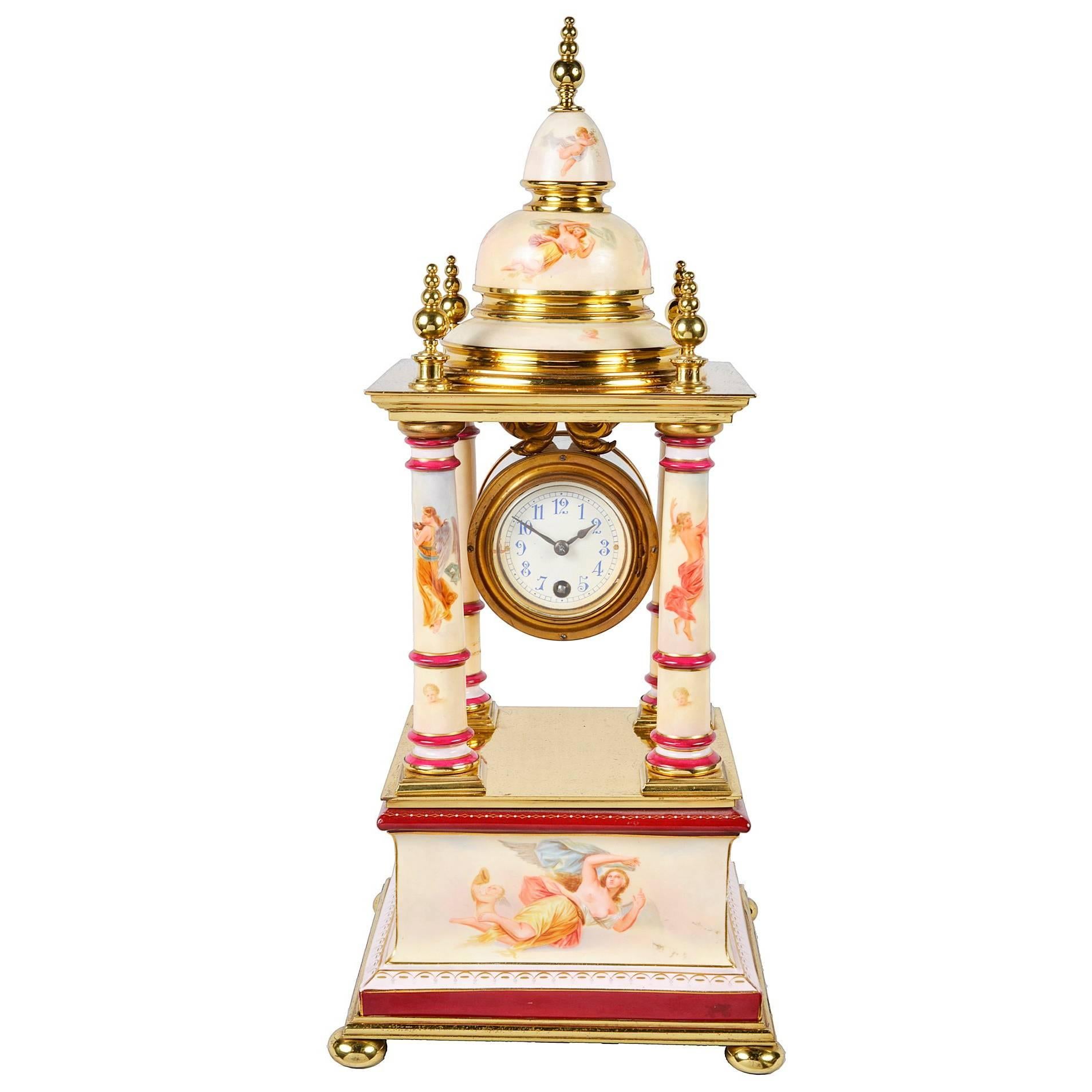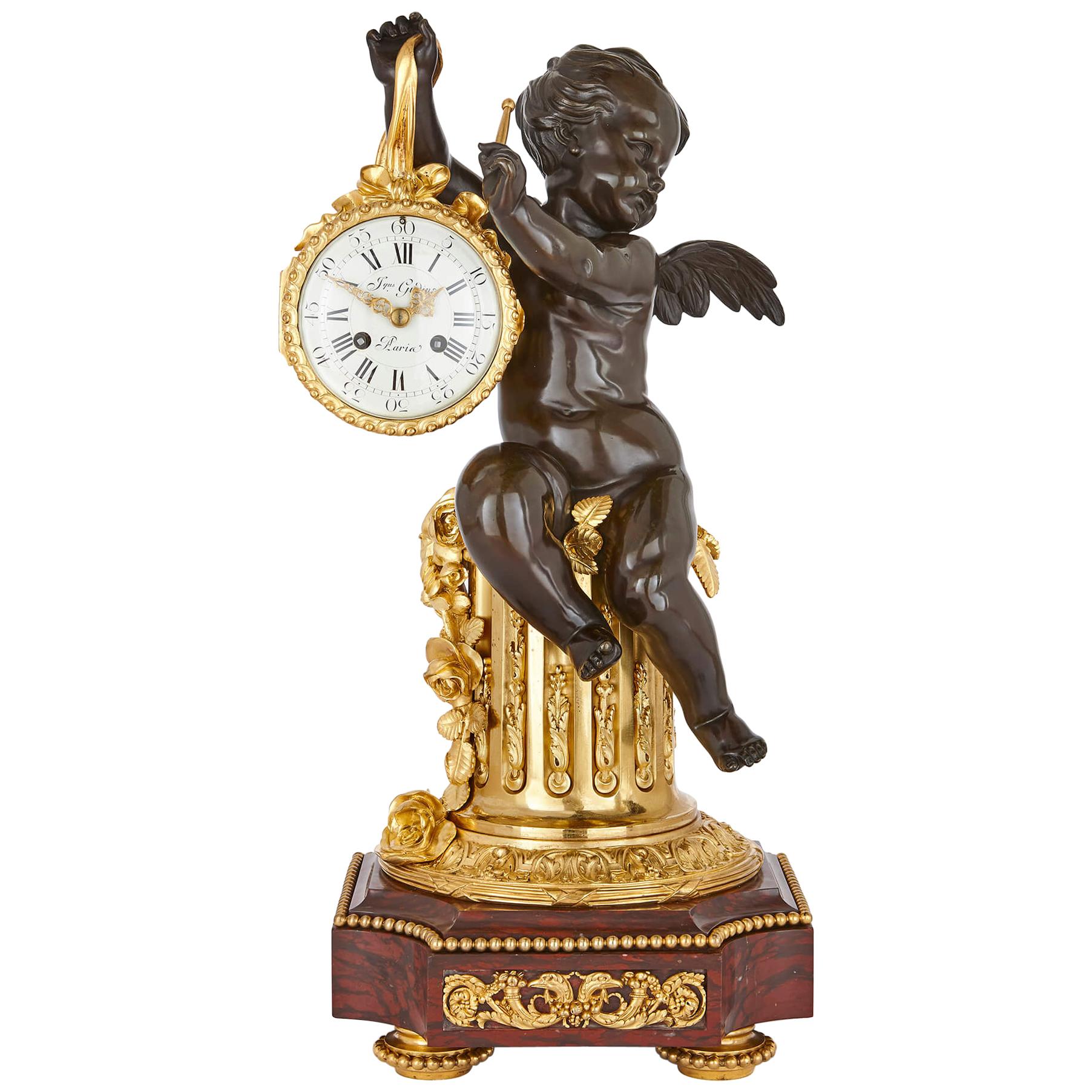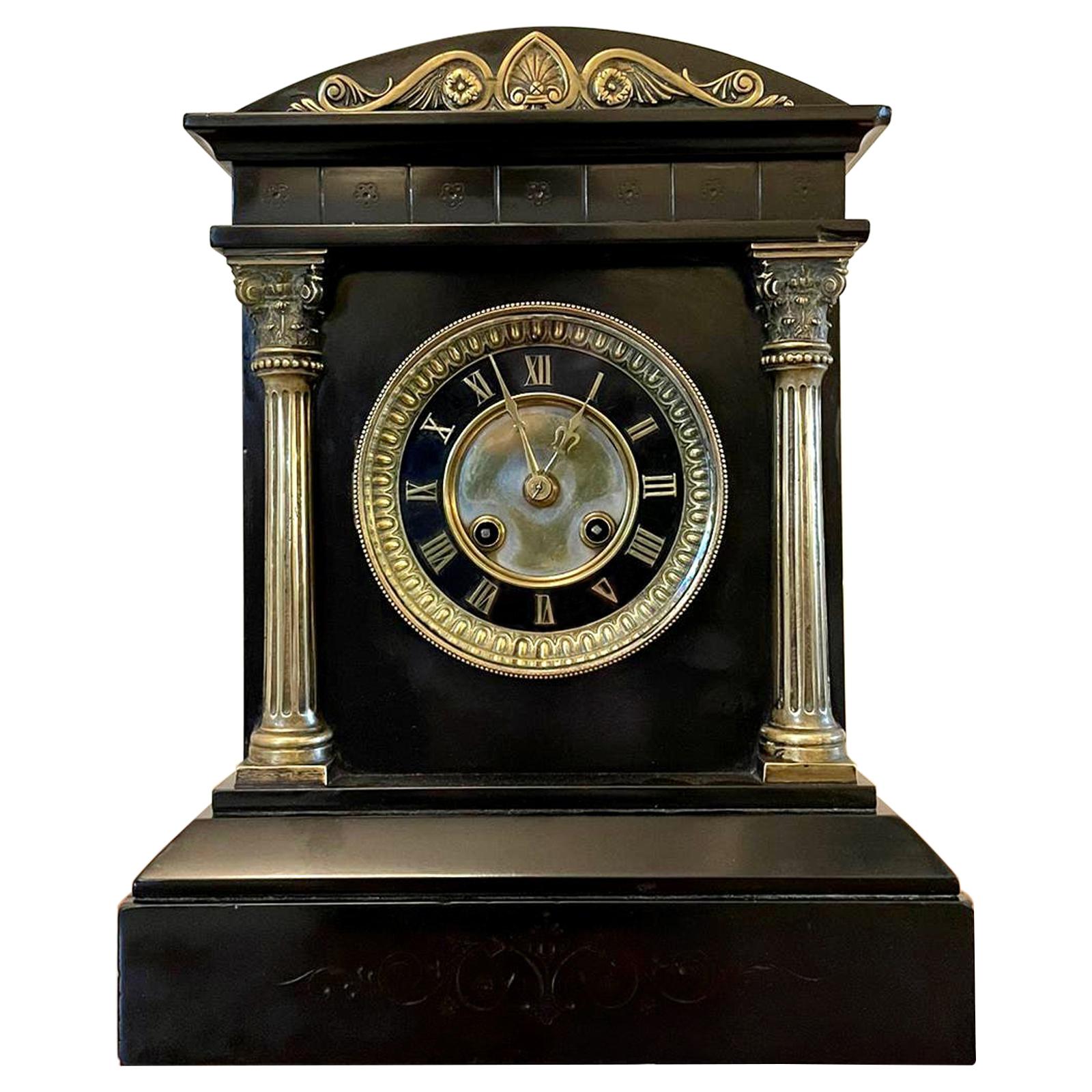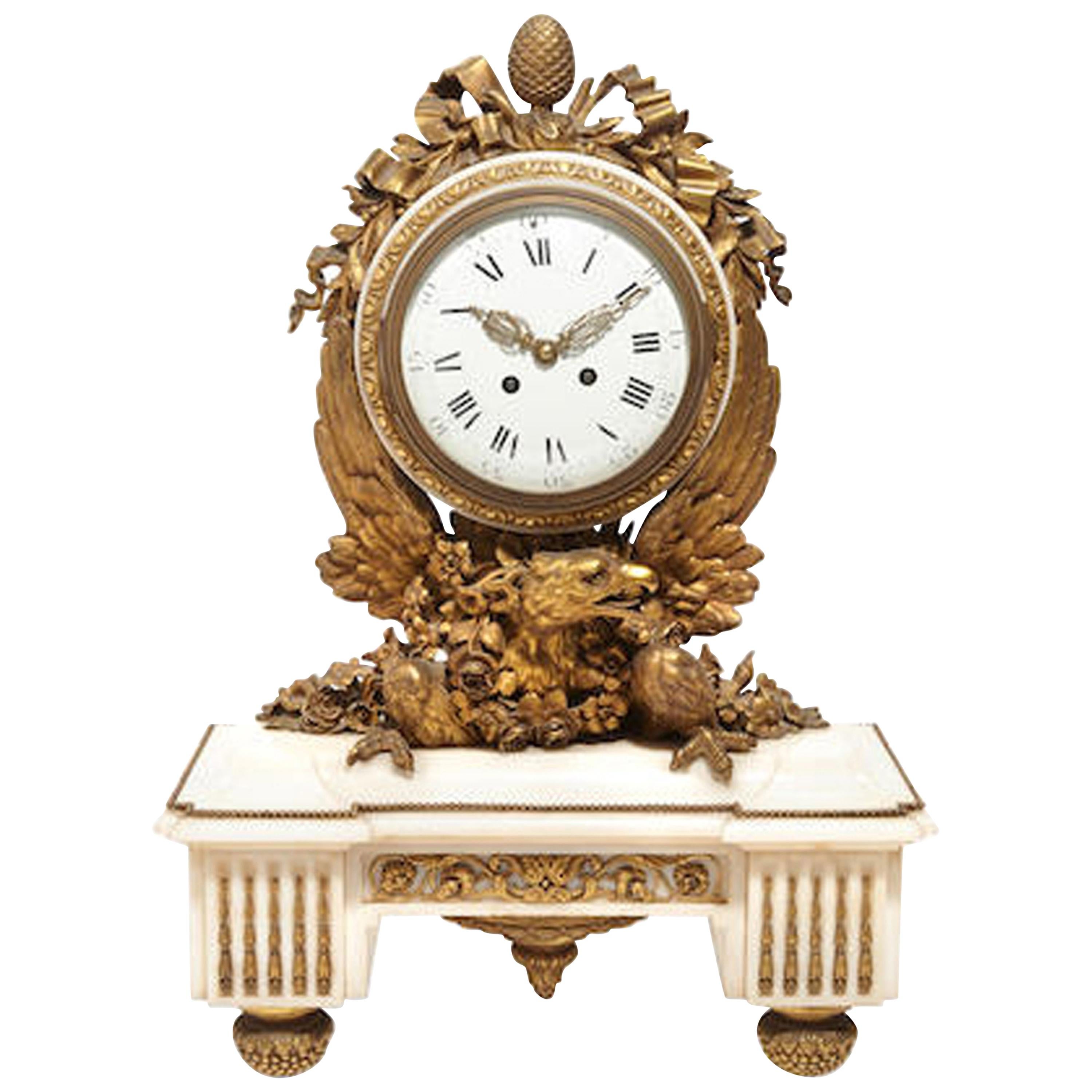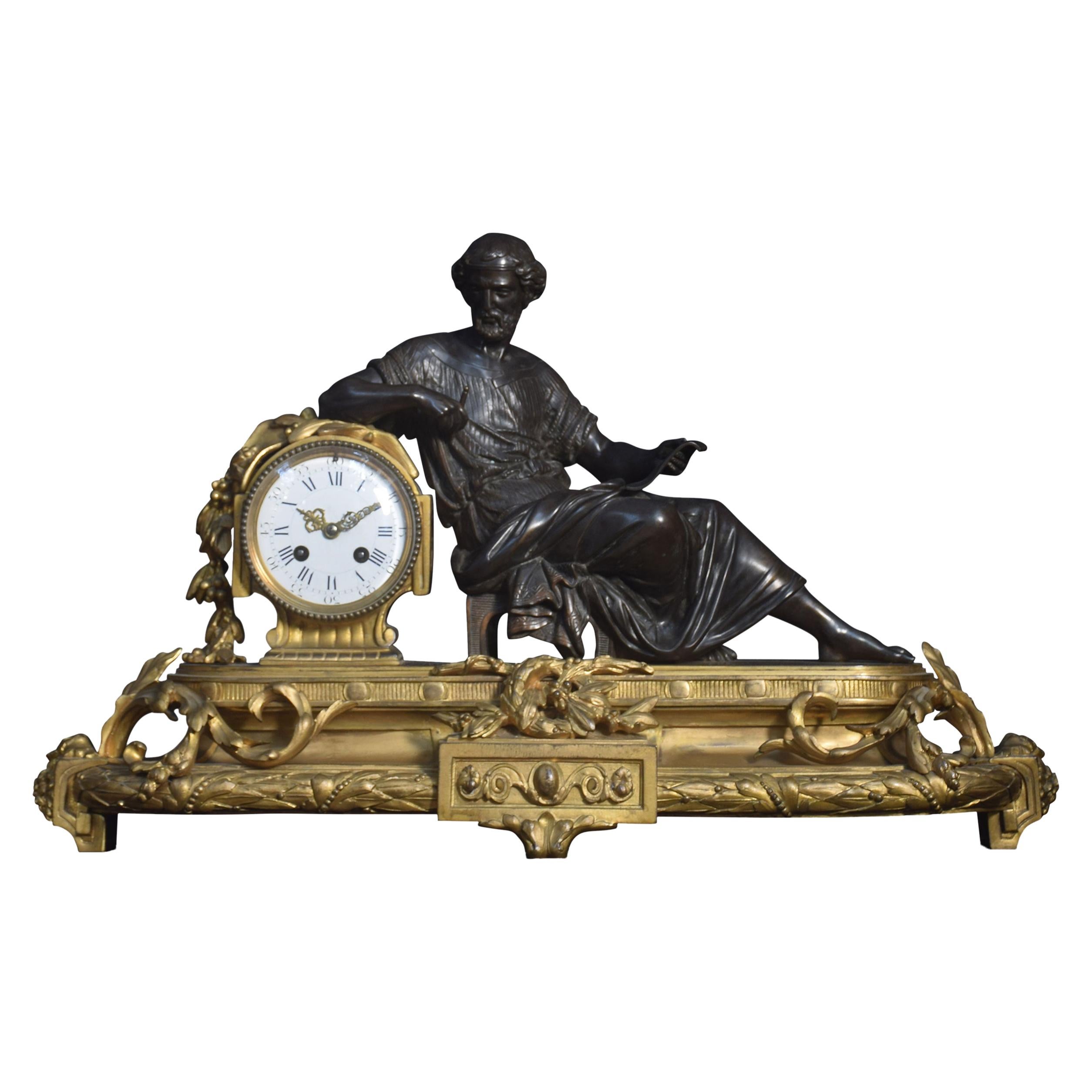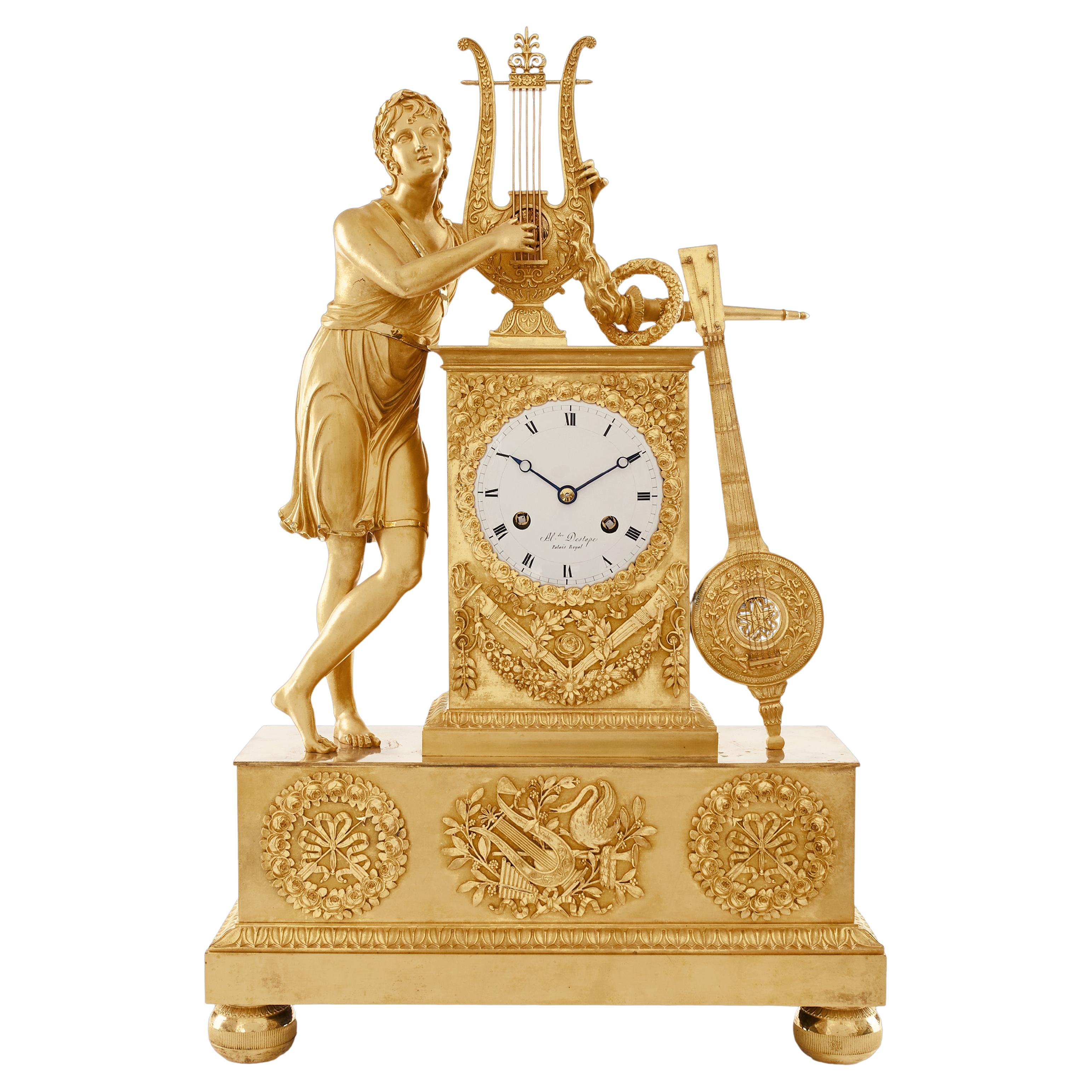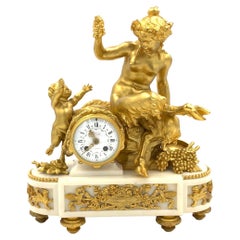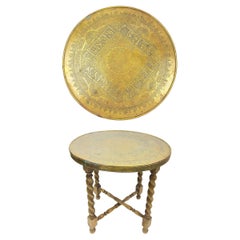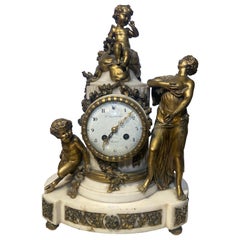
Late 19th Century Griotte Marble Mantel Clock by Ferdinand Barbedienne
View Similar Items
Want more images or videos?
Request additional images or videos from the seller
1 of 9
Late 19th Century Griotte Marble Mantel Clock by Ferdinand Barbedienne
About the Item
- Dimensions:Height: 5.91 in (15 cm)Width: 24.41 in (62 cm)Depth: 11.82 in (30 cm)
- Materials and Techniques:
- Place of Origin:
- Period:
- Date of Manufacture:Late 19th Century
- Condition:
- Seller Location:London, GB
- Reference Number:Seller: H1318 1stDibs: LU6022230028152
About the Seller
5.0
Vetted Seller
These experienced sellers undergo a comprehensive evaluation by our team of in-house experts.
Established in 1989
1stDibs seller since 2021
20 sales on 1stDibs
Associations
LAPADA - The Association of Arts & Antiques Dealers
More From This SellerView All
- Bejewelled 19th Century Sevres Style Clock SetLocated in London, GBA fine quality 19th century French Sevres porcelain style and gilded ormolu clock garniture, impressive pair of four branch candelabra. Measures: Clock, H: 53cm, D: 24cm, W: 27cm...Category
Antique Late 19th Century French Mantel Clocks
MaterialsBronze
- Louis XVI Style Gilt-Bronze and White Marble Clock, François LinkeLocated in London, GBThis playful Louis XVI style gilt-bronze and white marble clock, made by François Linke after a Clodion design, late 19th century.Category
Antique Late 19th Century French Mantel Clocks
MaterialsBronze
- Fine Mamluk Revival Brass Centre Table, Late 19th CenturyLocated in London, GBLate 19th century heavily carved Islamic calligraphy and Mamluk motifs brass centre table, the brass top of a round shape raised on a four spiral columns wooden base. Egypt or Syria.Category
Antique Late 19th Century Egyptian Center Tables
MaterialsBrass
- Late 19th Century Floral Gilt Decorated Royal Worcester Porcelain VaseLocated in London, GBA fine late 19th century vase in floral design, headed handles and strong gilt decoration from the sides.Category
Antique Late 19th Century English Vases
MaterialsCeramic
- Bronze Wall-Light for the Islamic Market, Late 19th CenturyLocated in London, GBA fine bronze wall light depicts a north African young lady holding the lights, surrounded by two columns and arch filled with Islamic motifs and verses of prayer.Category
Antique Late 19th Century European Wall Lights and Sconces
MaterialsBronze
- Pair of Rococo Style Gilt Wood Side Chairs, Late 19th CenturyLocated in London, GBEach with a padded back and seat, upholstered in greenish fabric with flower pattern, the shell-carved front seat rail raised on leaf-carved cabriole legs.Category
Antique Late 19th Century French Rococo Chairs
MaterialsGiltwood
You May Also Like
- Mantel Clock 19th Century Styl Empire by Ferdinand Berthoud À ParisLocated in Warsaw, PLOrmolu bronze mantel clock flanked by a troubadour and musical instruments, signed 'Ferdinand Berthoud a Paris'. The end of the 18th and beginning of the 19th century was a crucial time in which new technological advances helped to make watches more accurate and more portable. During the 1790s, the production of gilded bronze increased considerably as working conditions improved. The freedom of trade initiated by the French Revolution allowed many casters to develop large factories. The new factory environment gave them a chance to execute all stages of bronze work including drawing, casting, gilding, assembly, and trade of art objects. While the bronzers took creative liberty in creating all kinds of clocks in contrast to the noble and rigorous structure carried by the movement of neoclassicism. Under the reign of Empire, the case designs started gradually to develop away from a proportionate and strict classicism towards a baroque style and revival style. The rediscovery of medieval civilization was one of the intellectual curiosities of the beginning of the 19th century, with much input from the Ancien Régime and its institutions, rites and the medieval churches in which family ceremonies occurred. This early nineteenth-century figural mantel clock is surmounted by a medieval musician. To be more precise, it is a french troubadour. Troubadours were known for composing and performing lyric poetry for the nobility back during medieval times. The clock is featuring a chiselled bronze troubadour, dressed in medieval fashion while holding a flute, playing a tune from sheet music called "Du Troubadour" that is resting on top of the rectangular clock case. In addition to that, the clock features a gilt bronze lute or vielle resting on a small stool on the opposite side of the clock’s case. The white enamel dial features the inscription Berthoud and is underlined by a bronze entourage chiselled with palmette motif, plus encompassed by c-scrolls and wreaths. The original hands are in blued steel and encircled by Roman numerals indicating hour next to Arabic numerals indicating minutes. The small details that adorn the hexagonal plinth are reliefs, depicting two water fountains or basins on both sides with a lyre in between. The sculpted image of a lyre raised above the background features also foliage garlands tied on top with ribbons. The clock rests on seven spinning feet. The clock was made in the well-known workshop of the Berthoud’s family that was recognized for their excellent work by the King. Berthoud Clockmakers History. Ferdinand Berthoud was a horologist and author of extensive treatises on timekeeping as well as a Swiss clockmaker serving the king of France, that produced many marine clocks, including a weight-driven version that inspired the first American sea-going clock. He was born in Plancemont, Switzerland, the son of an architect and judiciary. In 1741 he began a three-year apprenticeship as a clockmaker under his brother, Jean-Henri. He made his first marine chronometer in 1754 (sent for trial in 1761) and in 1764 was appointed a member of the Royal Society, London and Horloger Mécanicien de Sa Majesté et de la Marine ayant l'inspection de la construction des Horloges Marines. In 1769, Ferdinand Berthoud sent for his nephew Pierre-Louis Berthoud (1754–1813), commonly known as Louis Berthoud, a talented young watchmaker and clockmaker, inviting him to come to Paris from Couvet, Switzerland, to pursue his apprenticeship. Louis helped Ferdinand manufacture and repair the sea clocks...Category
Antique Late 18th Century French Louis XVI Mantel Clocks
MaterialsBronze
- 19th Century Rare French Mantel Clock by F. Barbedienne with Bronze FiguresBy Ferdinand BarbedienneLocated in Sofia, BGFrench mantel clock by Ferdinand Barbedienne consisting of a terminal clock in the form of a fluted column in white marble and de...Category
Antique Mid-19th Century French Mantel Clocks
MaterialsMarble, Bronze
- Late 19th Century, Vienna Porcelain Mantel ClockBy Imperial Vienna PorcelainLocated in Brighton, SussexA good quality late 19th century Vienna porcelain mantel clock, having hand-painted classical figures and cherubs.Category
Antique Late 19th Century Austrian Mantel Clocks
MaterialsPorcelain
- 19th Century Ormolu and Marble Mantel ClockLocated in London, GBIn its unusual and beautiful design, this sumptuous mantel clock effortlessly transcends the boundaries between sculpture, clockmaking and objet de vertu...Category
Antique Late 19th Century French Belle Époque Mantel Clocks
MaterialsMarble, Ormolu, Bronze
- Fine Antique 19th Century Marble Mantel ClockLocated in Suffolk, GBFine antique Victorian marble mantel clock having a quality marble case with pretty ornate brass mounts, two attractive ornate Corinthian...Category
Antique 19th Century French High Victorian Mantel Clocks
MaterialsMarble
- French Ormolu Marble Mantel Clock, 19th CenturyLocated in Cypress, CASpectacular and unique French Napoleon III ormolu mounted white marble mantel clock, 19th century. The clock is surmounted by a gilt bronze pineapple finial with ribbons over a porcelain clock face with Roman Numerals enclosed into an ormolu egg...Category
Antique 19th Century French Louis XVI Mantel Clocks
MaterialsMarble, Bronze
Recently Viewed
View AllMore Ways To Browse
Fine Example
Marble And Gilt
Marble Mantel Clock
Monumental Paris
19th Clock Marble
French Marble Mantel Clock
Antique Marble Mantel Clocks
Marble Mantel Clocks Antique
Marble Mantel Clock Antique
Antique Marble Mantel Clock
Marble Antique Mantel Clock
Antique French Marble Mantel Clocks
Antique French Marble Mantel Clock
Antique French Mantel Clocks Marble
Late 19th Century Bronze French Clock
Bronze And Marble Mantel Clock
Bronze Marble Mantel Clocks
19th Century Mantel Marble Clock


